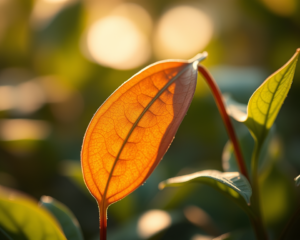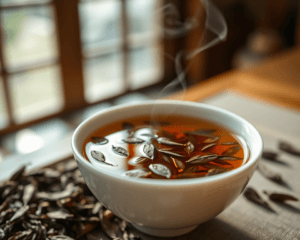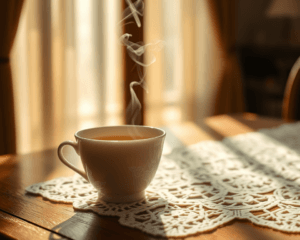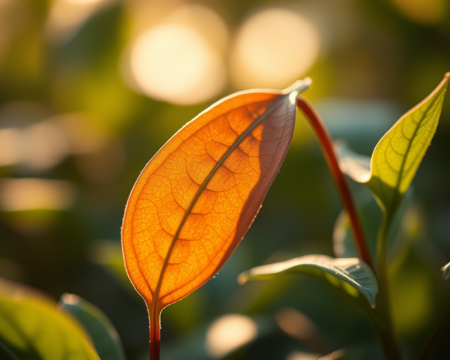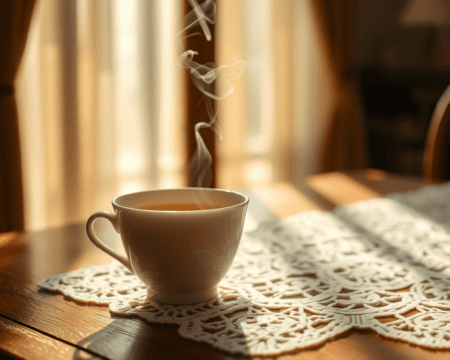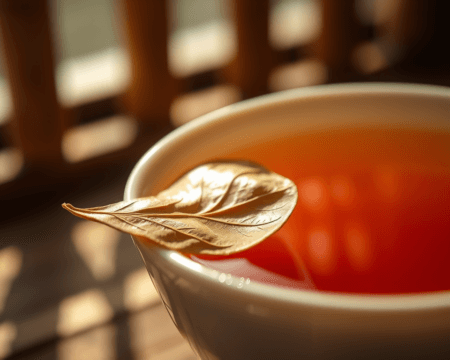When you think of matcha, you might picture a trendy café with a hip aesthetic and Instagram-worthy lattes. But here’s the deal—if you’re serious about matcha, knowing where to find the best stuff is key. Trust me, it’s not just green tea with a fancy label; it’s a whole experience that can elevate your daily routine. Whether you’re a health nut wanting those antioxidant benefits or a culinary wizard looking to spice up your cooking game, finding quality matcha is crucial.
Key Takeaways:
– The online market is flooded with premium matcha options, but quality varies widely.
– Specialty shops can offer unique local finds, but their inventory depends on location.
– Understanding different matcha grades (ceremonial vs. culinary) can help you make better choices.
– Preparation methods greatly influence the matcha experience; don’t overlook this!
Where to Buy Matcha Tea
Online Retailers Specializing in Matcha Tea
The beauty of the internet is that you can explore premium matcha from the comfort of your couch. Online matcha tea shops cater specifically to this green gold, and trust me when I say, you want to find the right suppliers. Here’s a rundown of some of the best places to buy matcha online:
Encha: This brand offers organic matcha sourced directly from Uji, Japan. The “Ceremonial Grade” is about $35 for 30g, and honestly, it’s worth every penny for a true matcha experience.
Matcha Konomi: They provide a range of grades, including culinary matcha starting at around $20 for 100g. This is perfect if you’re looking to experiment with matcha in recipes.
The Matcha Maiden: If you’re looking for something unique, their assorted flavor matchas scream creativity! Expect to pay about $25 for specialty blends that can really lighten up your meals.
Amazon also has a variety of matcha options, but it’s a bit of a mixed bag. Some brands are top-notch while others can be iffy, so read reviews carefully. Keep an eye out for brands like Jade Leaf Organic Matcha and Kiss Me Organics; they often provide high-quality matcha among a sea of options.
Be smart about your purchase. Check for freshness, quality certifications, and read reviews meticulously. There are countless online green tea stores, but only a handful serve up that premium quality you’re after.
Local Shops for Matcha Tea in Major Cities
Okay, for those of you who thrive on the in-person experience—hitting up local shops can be totally rewarding, especially if you live in or near a city with a vibrant food scene. Here are some tips to find the best local matcha vendors in your area:
Tea & Coffee Shops: Many cities boast unique tea shops, like Teavana or local artisanal tea stores, where you can find high-quality matcha. You might have to pay a little more, but supporting local businesses is always satisfying.
Health Food Stores: Places like Whole Foods or Sprouts often have dedicated organic sections where you can score great matcha, such as MatchaBar. Prices often start around $25 for quality matcha.
Matcha Cafés: Some cities have matcha-focused cafés. If you’re in Los Angeles, check out MatchaBar; not only can you grab a drink, but you can also buy their products right there.
Searching for where to find matcha tea locally can be a fun adventure. Use terms like “matcha cafes” or “specialty tea shops near me” to guide your journey.
Types and Brands of Matcha Tea
Comparison of Popular Matcha Brands
When it comes to matcha, not all brands are created equal. The biggest difference lies in the grade and quality:
Ceremonial Matcha: This is typically the highest grade, meant for traditional tea ceremonies. Brands like Ippodo and Encha offer powders that pack deep flavor and color—think vibrant green, smooth, and great for drinking straight.
Culinary Matcha: If you’re looking to whip up some bomb recipes—think matcha smoothies, lattes, or even baked goods—culinary matcha is the way to go. Brands like Matcha Konomi or Kiss Me Organics are the go-tos.
Here’s a table that highlights key features of some popular matcha brands you may consider:
| Brand | Grade | Price (Approx.) | Features |
|---|---|---|---|
| Encha | Ceremonial | $35 for 30g | Organic, Uji sourced, great for drinking |
| Matcha Konomi | Culinary | $20 for 100g | Ideal for cooking, budget-friendly |
| Ippodo | Ceremonial | $30 for 30g | Traditional Kyoto source, rich flavor |
| Jade Leaf | Culinary | $22 for 100g | Organic, good balance for various recipes |
Do your research before you pick. Each brand will have distinct flavors and uses, making it essential to find what resonates with your taste.
Niche Matcha Brands You Might Not Know
Looking to explore the deep end of the matcha pool? Niche brands could just blow your mind with unique flavors and origins. These are often smaller, artisan operations, but their matcha can be downright stellar.
Aiya Matcha: This lesser-known brand is a standout in various culinary competitions. Their matcha usually retails for about $30 for a ceremonial tin, and the quality is on point.
Mame Organic Matcha: A fantastic choice if you’re into organic. They often run around $25 for organic culinary matcha that complements your cooking endeavors beautifully.
Hojicha: This is roasted green tea, which isn’t technically matcha, but a delight for matcha lovers looking to experiment with different flavors. You can often find brands like Mizuba offering it.
Digging into niche matcha brands not only expands your palate but also helps discover hidden gems that can significantly enhance your matcha game.
Health Benefits of Matcha Tea
Nutritional Profile of Matcha
Now, why should you even care about matcha aside from its Instagram appeal? The health benefits packed into matcha tea are phenomenal.
Rich in Antioxidants: Matcha is loaded with catechins, particularly EGCG, which is touted for its cancer-fighting properties. When you drink matcha, you’re essentially consuming the entire tea leaf, which is where these powerful antioxidants hang out.
Boosts Metabolism: Studies suggest that matcha can aid in increasing fat burning, especially during exercise. If you’re looking to optimize your workout sessions, grab a matcha latte beforehand.
Calm Energy: Matcha contains L-theanine, which promotes relaxation without drowsiness. It balances out caffeine levels to provide a clean energy boost without the jitters—perfect for those long workdays.
Dig into the matcha nutritional information; it’s essentially nature’s multivitamin packed into a cup.
Incorporating Matcha into Your Diet
Getting the most out of matcha means finding fun ways to throw it into your daily routine. Here are some practical ways to integrate it:
Morning Smoothies: Toss a teaspoon of ceremonial grade matcha into your blender for a great pick-me-up. Combine it with banana, spinach, and almond milk for a breakfast that slays.
Baking: Swap regular flour with culinary grade matcha in your cookie recipes. It not only adds flavor but also gives you an impressive green hue that makes for great social media content.
Lattes: Going for that café vibe at home? Whisk up some matcha with hot water, add a splash of oat milk, and voilà! You’ve made a matcha latte that’ll rival any café.
Experiment with various recipes to see what sticks. Incorporating matcha into daily meals can totally change your culinary game.
Tips for Preparing Matcha Tea
Traditional and Modern Preparation Methods
Let me tell you, there’s an art to preparing matcha. Whether you want to go traditional or modern, the key is in the technique.
Traditional Method: Start by sifting 1-2 teaspoons of matcha powder into your bowl. Add a couple ounces of hot water (but don’t let it boil—too hot, and you’ll ruin it). Whisk vigorously in a zig-zag motion to create a smooth froth on top. Seriously, this is where the magic happens!
Modern Twist: If you’re running short on time, try using a blender. Combine matcha powder, a bit of hot water, and your choice of milk, then blend it all up. This results in a creamy, frothy drink minus the elbow grease.
Don’t overlook these preparation methods! A great matcha experience hinges on how it’s made.
Common Mistakes When Making Matcha
Even seasoned matcha drinkers can trip up sometimes. Here are some classic pitfalls to avoid:
Using Too Hot Water: Remember, you don’t want boiling water. It’ll scorch the leaves and ruin that delicate flavor. Aim for 160-180°F for best results.
Forgetting to Sift the Matcha: Skipping this step can lead to clumps that are a nightmare to whisk away. A fine mesh sieve helps maintain a smooth, creamy drink.
Overwhisking: You want to achieve bubbles without creating a frothy mess. Find that sweet balance!
Finesse makes perfect. Paying attention to preparation ensures you enjoy all the flavor and health benefits matcha has to offer.
Frequently Asked Questions
What is the difference between ceremonial and culinary matcha?
Ceremonial matcha is of higher quality, intended for traditional tea drinking with a smooth texture and vibrant color. Culinary matcha, on the other hand, is more robust and suitable for cooking and baking, offering a stronger flavor that works well in recipes.
Can matcha tea go bad?
Yes, matcha can lose its flavor and potency over time. It is best stored in a cool, dark place in an airtight container. Ideally, use it within 1-2 months after opening to enjoy its maximum health benefits and flavor.
How much matcha should I consume daily?
A typical serving of matcha ranges from 1 to 2 teaspoons per day. This amount provides a good balance of health benefits without excessive caffeine intake. Always consult with your healthcare provider if you have specific health concerns or conditions.
Is matcha safe for everyone to drink?
Generally, matcha is safe for most people, but those with caffeine sensitivity or certain health conditions should limit their intake. Pregnant or breastfeeding women should consult their healthcare professional before adding it to their diet.
How can I tell if my matcha is high quality?
High-quality matcha should have a vibrant green color, a fine powder texture, and a rich, pleasant aroma. Taste it: good matcha has a smooth, slightly sweet flavor without bitterness. Check for certifications, such as being organic or sourced from reputable regions in Japan.
What preparations can I use for matcha besides tea?
Matcha can be used in various recipes, including smoothies, baked goods, salad dressings, and even as a seasoning. It adds a unique flavor and nutritional boost to many dishes, making it a versatile ingredient in the kitchen.
How do I whisk matcha properly?
To whisk matcha, start with a fine powdered matcha in a bowl. Add 2 ounces of hot water (not boiling) and whisk vigorously in a zig-zag or “M” motion until you achieve a frothy consistency. This technique enhances the matcha’s flavor and ensures a smooth drink.
Can I use matcha in my skincare routine?
Yes! Matcha has antioxidant properties that can be beneficial for skin health. It’s often used in face masks and scrubs for its anti-inflammatory benefits. Just make sure to do a patch test before full application to avoid sensitivities.
What makes matcha different from regular green tea?
Matcha differs from regular green tea in that it involves consuming the whole tea leaf in powdered form, leading to higher concentrations of antioxidants, caffeine, and other beneficial compounds. This unique preparation method elevates its health benefits and flavor profile.
